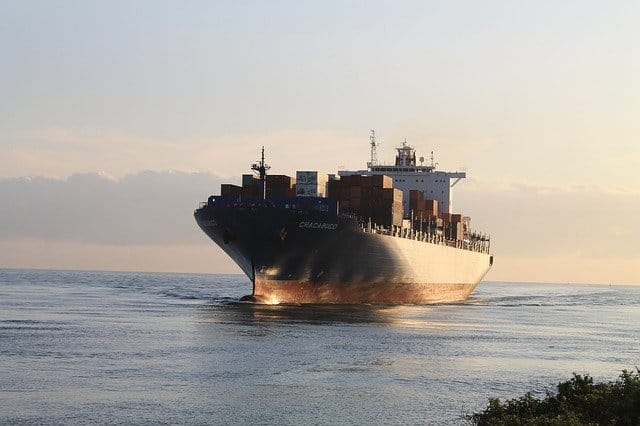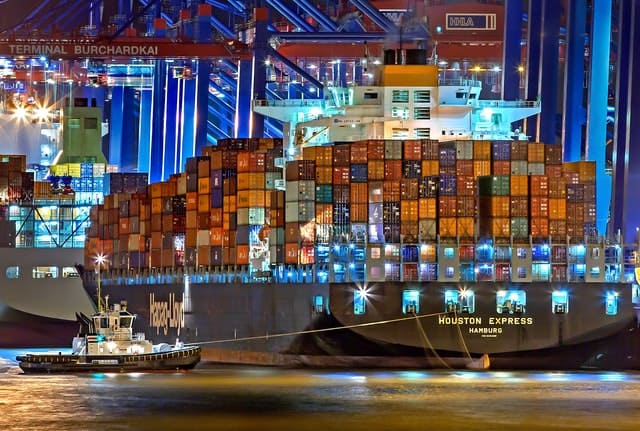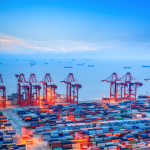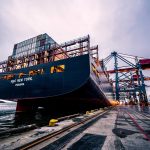Fun Facts About International Trade

This is a guest post by Maggie Simpson.
As the backbone of the global economy, international trade has its own history and quirks. Buckle up as we get the lowdown on some of the most bizarre shipping laws worldwide, surprising goods countries across the globe export for a tidy sum, evolutionary nature of the industry, and more. Here are some fun facts about international trade to serve you as a great new conversation starter.
International trade is an age-old practice
First in our line of interesting things regarding import and export business is its very own quick history lesson. Although the accounts and elucidations of the international trade as an exchange between different nations did not begin until the rise of the modern nation-state, variations in resource availability have always existed.
Starting all the way back in 6000 BC with the barter system, when goods were exchanged for spices, food, and, at times, human skulls, the trade saw a shift towards the 16th and 17th-century mercantilism, and then, to its first biggest highlights – “The Wealth of Nations” and “Comparative advantage principle” of the 19th century. Despite its ups and downs thenceforth, the last decades have witnessed the sum of imports and exports across nations moving up the vertical axis and eventually reaching the value of over 50% of global production.
What was the business like one hundred years ago?
Transportation
Perhaps something that would best highlight the primitive beginnings of transportation is the fact that before the era of the automobile, the main modes of transportation were ships, rail, and horse and carriage. For starters, until steam-powered ships replaced sail-powered ones, transporting cargo across the Atlantic literally took weeks. As for truck transportation, the first truck could haul only 3,300 pounds with its four horsepower, two-cylinder engine trucks, but it wasn’t invented until 1896. And to top this, there weren’t any paved concrete highways until the first one was created in 1909, so we’re looking at 20 miles per hour speed limit for cars and 7.5 for trucks on most roads at the time. Yikes!

Technology
The last century’s remarkable advances took communications, logistics, and supply chain technologies to a whole different level, thus completely altering how business is done. GPS satellites, internet, credit cards, bar code scanners, iTranslate, smart ports – you name it! Today, it’s possible for companies to communicate instantly with overseas clients, send documents with just a few clicks, and track (and even watch) their shipments traveling across oceans, whereas 1915 didn’t even have a calculator!
Containerization
The arrival of containerization in the 1950s presented a genuine breakthrough in international trade. Not so long ago, loading and unloading goods at commercial ports were incredibly time-consuming and laborious. Business people had to subsidize both the worker’s wages and have a ship moored at port. Containerization made it possible for exporters to load containers with their goods at the place of production instead of at the quayside, thus decongesting the formerly crowded ports.
Of course, it is crucial that the regulations against storing some items in these containers are carefully followed. However, another surprising fact about the international shipping industry is that these containers are only inspected in 5% of the cases.

90% of goods are shipped by ocean freight
The next one of our fun facts about international trade is that people have used water for transporting cargo since the beginning of time. Throughout history, international trade shipping has positively influenced the relationships many countries share, making a global impact on their economic prosperity, political views, and social standards. And it all started with them attaching small cargo to single logs for trade purposes. Having come a long way since then, container ships of today can meet the needs of any given business, with some of the largest ones carrying more than to 20,000 TEUs. So, it comes as no surprise that ocean freight accounts for a whopping 90% of all shipments (primarily due to its efficiency and cost-effectiveness), driving the growth of many businesses across the globe.
What does the future hold?
Even though shipping is the most environmentally friendly mode of transport (consuming considerably less energy and fuel than trucks or planes), it is still the world’s 6th largest pollutant. Luckily, it’s on the brink of a revolution with shipping decarbonization as the primary driver of change. Adopting a promising GHG reduction strategy in 2018, the International Maritime Organization (IMO) set the target of at least a 50% reduction of total GHG emissions from shipping by the year 2050 and the average carbon intensity by at least 40% by 2030.
French town bans clowning around
Those looking to ship their packages to another country, be it for personal or business purposes, should always be aware of the dos and don’ts of that country’s shipping laws. The reason for this being a surprising number of oddball custom laws worldwide regarding what is allowed or not allowed to be brought through the borders of a specific country. Bear in mind that these countries aimed to protect their citizens and boost the growth of their local businesses, which eventually caused them to end up on various lists featuring the most bizarre shipping laws across the world. Banning the import of clown costumes due to a series of incidents in France nationwide is just one of these examples. Namely, the French town of Vendargues cracked down on clown costumes after a creepy trend on social media had provoked prank attacks on the streets. The whole of France reported such incidents in 2014.
Similarly, shoe manufacturers should be aware that sending a pair of matching shoes to Mexico, India, and South Africa is considered illegal. This was meant to encourage the growth of the local footwear industry. Moreover, in 1991, Singapore has banned chewing gum in order to promote civic cleanliness. Saudi Arabia banned greeting cards featuring music and car horns; the European Union doesn’t allow Japanese Pufferfish due to its highly toxic organs, etc.
Is the UK the world’s biggest exporter of legal cannabis, or what?

Transform Drug Policy Foundation, a registered non-profit charity based in the UK and working in drug policy reform, reports to the BBC that the government is denying the potential medicinal properties of marijuana (that can be administered on patients at heroin detox to cure their mental illness) while, at the same time, supervising “the world’s biggest government-licensed medical cannabis production and export market.” Yes, the substance is banned in the UK. However, INCB (the United Nation’s International Narcotics Control Board) reports 95 tons worth of legal cannabis production in 2016. Accounting for nearly 45% of the world’s legal total output, this makes the United Kingdom the largest exporter of cannabis-based medicines in the world.
Next in line, right after the UK, is Canada, with its 85 tons of production. However, this is not the only surprising thing about potential Canadian exports. OEC reports from 2017 name Canada as the top exporter of bovine semen for artificial insemination to overseas countries – £45.1m ($60.2 million) worth of bovine semen, to be exact. And – surprise-surprise – the top importer was the UK!
To the moon, through customs, and back
The following is more of an interesting story than one of the fun facts about international trade, but – did you know that even if you had to have “Moon” listed as your departure point, you wouldn’t have been able to evade the “customs declaration” form back in 1969? Apollo 11 astronauts, after their remarkably long business trip, had to declare their cargo to customs officials at Honolulu, Hawaii, USA. Neil Armstrong, Buzz Aldrin, and Michael Collins all filled the customs form declaring tariff-exempt moon rock, moon dust samples, and other lunar samples and listing their en-route stop as “MOON.” Apparently, Moon visitors are no different than the rest of us who leave the country. As NASA spokesperson Nicole Cloutier-Lemasters said: “They do have a government passport, but they do have to go through customs, just like the rest of us.”
This was a guest post by Maggie Simpson.
Author Bio
Maggie Simpson is a freelance writer who loves history. She has been content creator for many websites and her favorite topics are history and travel-related. In her free time, Maggie enjoys reading and walking in the nature.




